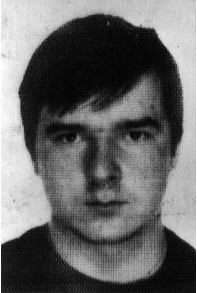RFJ Statement in today’s verdict in the inquest of Pearse Jordan
RfJ pays tribute to the parents of Pearse Jordan as judgefails to endorse police response to his killing
Pearse Jordan was shot dead by the RUC on 25 November 1992 on the Falls Road
just after 5pm. He was later claimed by the IRA as a volunteer on active service.
At the conclusion of the inquest into his killing, Mr Justice Horner said that
because the evidence was contradictory and because of the lapse of 25 years, hecould not come to a realistic conclusion as to what happened; indeed, he remains“profoundly unsure of what took place”. This means that the RUC could not
convince him of their role, even though, he obscurely accepts that the killer,
officer A, acted in self-defence.
Nevertheless, when looked at overall, the state failed in this inquest to prove thatthe killing was lawful.
The picture that emerged from the evidence was difficult for Pearse’s parents,
Hugh and Theresa, to hear.
Their son was one young man confronted by a vast state apparatus observing hismovements and choosing its moment to strike. The visible state apparatus
involved two vehicles full of well-armed and experienced RUC men. (A number
had been involved in one way or another with the shoot-to-kill incidents – the
Stalker/Sampson cases – from a decade before. The state had protected them
then and through a controversy-laden set of investigations and prosecutions.
Final decisions had been taken by the British Attorney General in London.)
The invisible state apparatus involved a prolonged surveillance operation with
communication back to a command room in east Belfast where senior officers
monitored and instructed their visible operatives.
Pearse had no chance. The evidence accepted by the judge was that he was shot
in the back while running away from the armed RUC-men. It was accepted that
he was no threat to them; the RUC claim that he was armed and that the car he
was in contained a bomb were proved untrue.
These officers knew they would not be made accountable.
Once the shooting took place, all officers involved in the control room and on the ground had a de-briefing session where they agreed their story. This was in
contravention of proper practice where killers in uniform are supposed to be
isolated during an investigation. The judge was critical of the police on this point
Despite what many will think, the Judge did strongly say that membership of the
IRA does not: “mean that such a person had in some way forfeited the right to beprotected by the law. Such a person was still entitled to the full protection of the law which includes the presumption of innocence, the right to a fair trial and the
right to have legal representation. The rule of law demands no less. He does notbecome an outlaw who can be summarily executed whether by officers of the
State or otherwise.”
All recommendations point to failures on the part of the police. Weapons should
fire single shots rather than bursts of fire, disclosure of intelligence to the inquestwas mishandled, scenes of crime procedures were not followed, the investigation
took far too long, record-keeping in the control centre was faulty.
This is the conclusion of the third time the inquest has been convened. It has been the subject of 24 judicial reviews, 14 appeals to the Court of Appeal, two hearings in the House of Lords and one hearing before the European Court of Human Rights. The British government has been found guilty by the European Court on account of the delays. We pay tribute to Pearse’s parents, Theresa and Hugh, who have taken on the state and sought to protect the rights of others at risk from the state. Tragically, Pearse is dead; his parents’ selfless fight was in the service of the rest of us.









